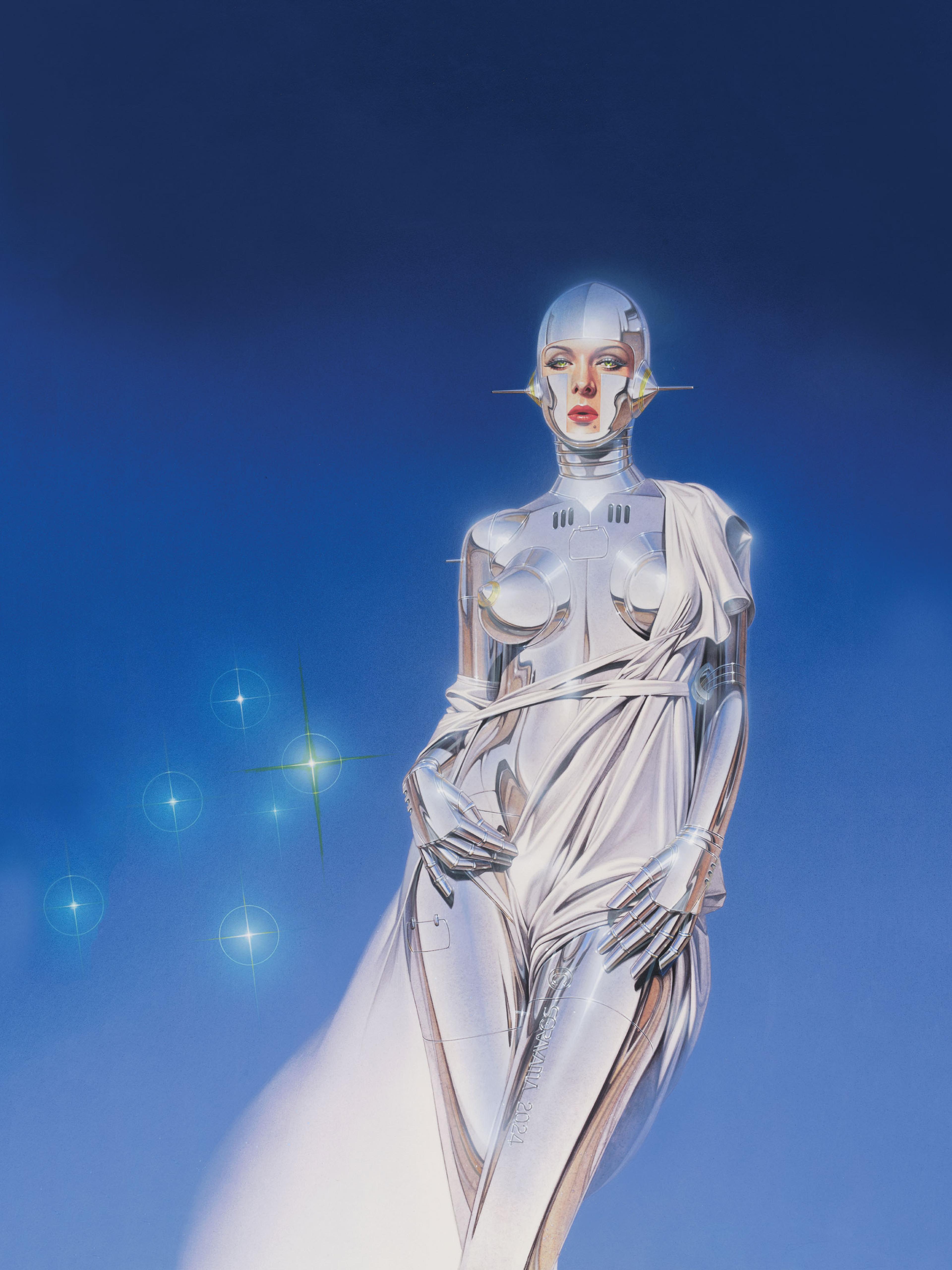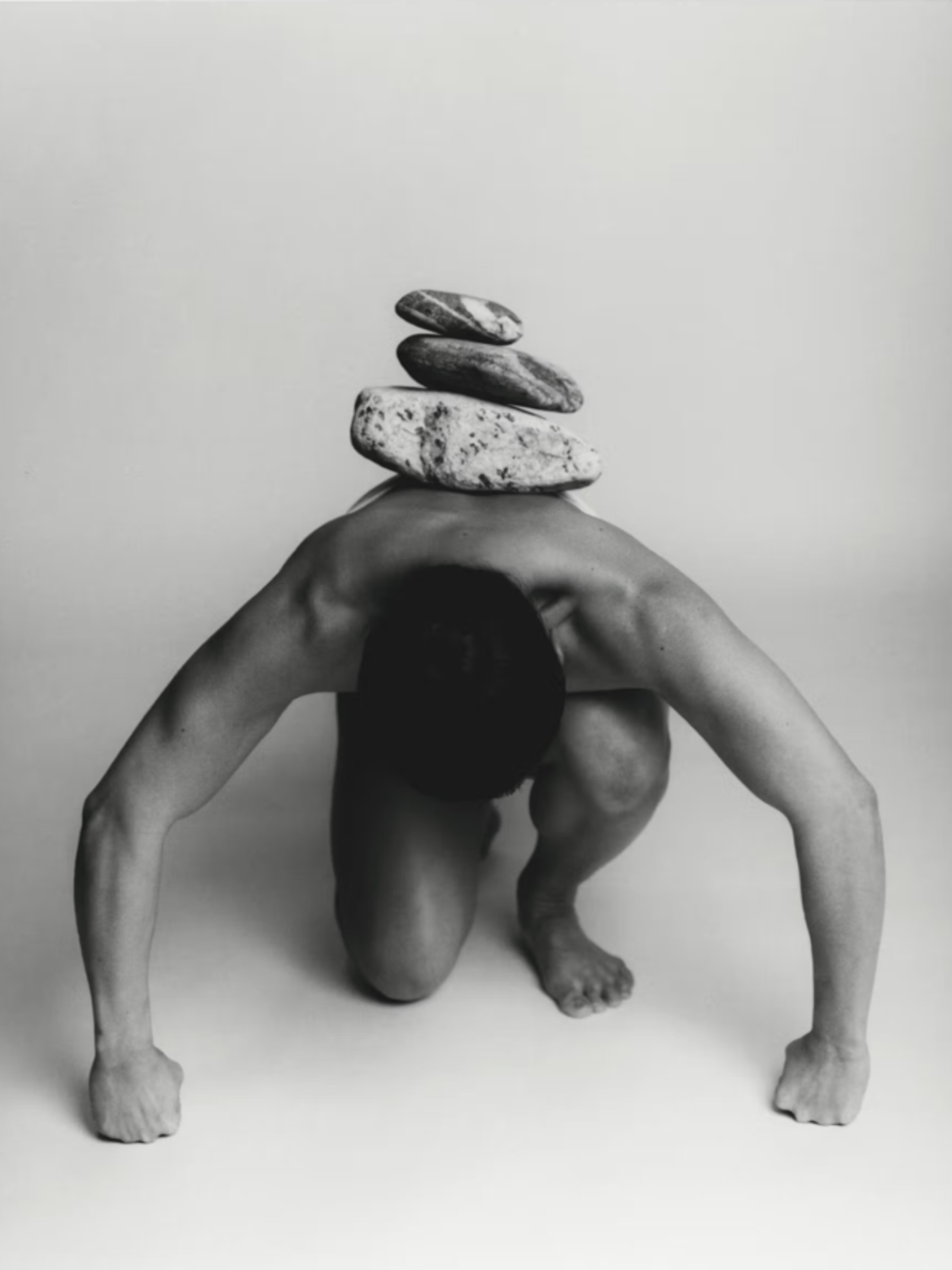Maya's World
MAYA'S WORLD
Words: 22
Estimated reading time: 0M
Inside Maya Golyshkina’s latest exhibition, where fine art meets high fashion meets the selfie
By Karly Quadros


"No matter where I am,
I can always bring my own world there.”
Maya Golyshkina


"Beauty is imperfection,
I think."
Maya Golyshkina



Maya’s
World
Words: 1693
Estimated reading time: 9M
Inside Maya Golyshkina’s latest exhibition, where fine art meets high fashion meets the selfie
By Karly Quadros
Maya Golyshkina always felt out of step with the world around her—so she created her own. The 23-year-old artist transforms herself and her surroundings, crafting dreamscapes with everyday objects. Golyshkina finds the fantastic in the mundane, reimagining herself as an ashtray, a slice of pizza, or a designer handbag using little more than cardboard, paint, and whatever’s left in her fridge. Her work is irreverent, raw, and occasionally outrageous, evoking Snapchat filters and the self-portraits of Cindy Sherman in turn. What began as a playful pandemic photography project, riffing on Internet culture and the pressures of beauty standards, has evolved into a whole world, spiraling out of Golyshkina’s bedroom and into editorials for labels like Marc Jacobs and Balenciaga.
Now, Golyshkina’s brought large-scale prints and videos of her wearable sculptures to London’s Seventeen Gallery with her solo show 'Embodying Dissonance: A Journey Beyond the Norm.' It garnered praise for its bridging of fine art, fashion, and a fiercely original take on the self-portrait. Beyond Noise caught up with the artist to talk creative process, combatting Russian conservatism, and creating her own reality from what she has at her fingertips.
KARLY QUADROS: To start off, can you tell me a little bit about your current exhibition with Seventeen Gallery?
MAYA GOLYSHKINA: It’s a mixture of my old works and a series of new ones. It’s a story about myself, my body, my perception of it. It’s called 'Embodying Dissonance: A Journey Beyond the Norm'—because I usually go beyond the norms with my art. I know it sounds a bit banal because I do this all the time with my body, but it’s a new chapter.
KQ: I know you began your project during the pandemic. How has your work changed since lockdown?
MG: It has changed a lot. Before, I was a photographer, a painter, a set designer, a casting director. I was experimenting [in lockdown] because I didn’t have [that sense of] purpose. I just had an idea, and I wanted to capture it. I really wanted to show and describe my personality. When it started, I was scrolling and thinking, like, Oh my god, all the photographers just do boring selfies of themselves. I didn’t want to be perceived as a photographer. I felt like showing my world and myself in different ways. The quarantine helped me improve my skills. It was a huge exploration of my body and the nature of a room. I had all day long, and I just started producing heaps of things.
I know that many people liked my old works, but I hate them, honestly. Because for me, they’re too simple. It was an exploration of household objects and funny portraits. They [weren’t taken] seriously in the way of a self-portrait artist. The magazines and stylists came out of nowhere. They just started following me. My first story was for 'The Face.' After that, so many people from the fashion and art industries [followed me]. I didn’t expect myself to be in the fashion industry, to be honest. It was something unusual. I felt that everyone was a bit lost and confused during the pandemic. It was [a time of] exploration of the pace of our reality, because everything was so fast before. You don’t need a team, you don’t need the lightning. You can do everything yourself—and that’s why I think people started relating to my work.
KQ: I am curious about you making art in your house, an intimate setting, exploring your world that had just gotten so much smaller. How has your approach changed now that you’re creating within a traditional gallery space?
MG: It’s a plus and a minus at the same time. I still work in my room mostly. Since I came to London, I have changed my flat a lot. I was living in tiny rooms—the rising cost of living crisis and everything. I was super stressed. The only thing that I brought with me every time was my art. I think that’s why Western people like it. Coming from limited access, I didn’t have proper training. My works, sometimes they look too rough or they’re Photoshopped weird, and it’s quite messy and dirty. This is the only way I can show my ideas.
Sometimes I’m insecure about the fact that I don’t technically have a base or an education. You just feel things by heart, by your hands. I think maybe, commercially, I’m not that good, and it’s really hard to explain how I did this or that—but then this is what makes me unique.
KQ: You have pieces that riff on Patrick Star, Hello Kitty, Marge Simpson. How do internet culture and pop culture inform your artistic sensibility?
MG: They’ve completely changed my life, because this is how I built my career. I’m not coming from a wealthy background—being from Russia with no education or connections. I moved to London two years ago, and no one could believe that I’ve never lived here before, because I was already recognized by people.
You asked me about the gallery. It’s funny to see all these worlds become really serious in real life—because in real life, they look really different and you perceive them differently. I think Internet culture gives you the vibes of another world, and it’s like another reality where my works are placed quite perfectly. It has the certain feeling of [fine art], but at the same time, the photo was taken in my room. It’s the selfie of my imagination or something. I was just making fun of people who were trying to be, like, super conservative, super posh, on their Instagram pages.
KQ: Is beauty, as an ideal, something that you’re drawn to?
MG: Beauty standards, for me, are quite different. I explore a lot of beauty standards in my work, and as a woman, I’m fighting with stereotypes. It’s really hard to say what beauty is. Beauty is imperfection, I think
KQ: Do you think about politics in relation to your work?
MG: Of course—I’m coming from Russia! It was a huge fight. I could not express myself fully in Russia. Its patriarchy I’m trying to fight with. Politicians are different in each country, but it’s two sides of the same coin, basically. I started [my work] from the struggle of not understanding myself. Russia has a very conservative, judgmental society with lots of restrictions, a post-Soviet Union mentality. That’s why I think I was always feeling aggrieved. I always wanted to escape. I felt like a reject. I felt unsafe, especially as a woman. Domestic abuse is still allowed in Russia. There is no law against it, and if you’re gay, you can be jailed. At the same time, this is what makes me special here [in London]. It’s controversial; [for some], it’s bad to say that you are Russian, because you are ashamed. Marina Abramović, for example, came from a very conservative communist background, and people hated her there. She wasn’t doing really well. But she escaped and changed history and perception.
KQ: Do you think coming from a sort of repressed background pushed you to explore inner worlds more?
MG: Yeah. A lot. No matter where I am, I can always bring my own world there.
KQ: What do you think people misunderstand about your work?
MG: That it’s childish. I didn’t do this on purpose to be crazy. I’m doing this because I can only do it this way. I think my works are [seen as] childish in the way that adults are scared of being themselves. I’ve never felt, even as a child, safe at home. I always wanted to create my own reality. This is what so many people have said about my work: It reminds them of their innocent, childhood soul, when you could feel and do whatever you want.
Even here in London, the reality day-by-day is so boring and so stressful. Art is a good way to escape no matter what you have going on in your life. You can be—I don’t know—a car, a cat, or an apple. I’ve been passionate about this since I was one, since I was drawing on my mom’s couch.
KQ: What's next for you?
MG: I want so many things, but I would really love to keep working with galleries. Fashion too, but it depends on the brand and the project. An exhibition in New York would be ideal. America is waiting for me, I know. And Christmas is coming, which means that my calendars are going to be released soon. I do them every year!
I started doing mostly just whimsical costumes, on my bed. But [sets and scenes] are what I really want to work on and keep exploring. It’s just a matter of money and connections and imagination. My dream is to create my world on a bigger scale.
PHOTOGRAPHER
TALENT
TEXT
KENDAL WALKER
MAYA GOLYSHKINA
KARLY QUADROS
Beyond Noise 2025
PHOTOGRAPHER
TALENT
TEXT
KENDAL WALKER
MAYA GOLYSHKINA
KARLY QUADROS
Beyond Noise 2025


